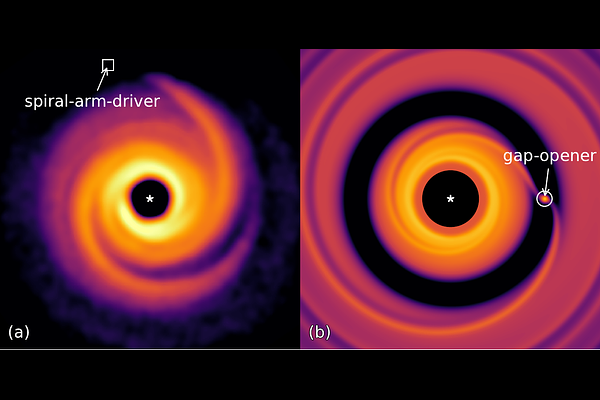Studying Protoplanets and Protoplanetary Disks with the Habitable Worlds Observatory

Studying Protoplanets and Protoplanetary Disks with the Habitable Worlds Observatory
Bin B. Ren
AbstractSince the discovery of the first exoplanet orbiting a Sun-like star, the confirmation of nearly 6000 exoplanets to date - and their diversity - has revolutionized our knowledge of planetary systems in the past three decades. Nevertheless, the majority of these planets are around mature stars (${\gtrsim}1$ Gyr), where the planet birth environments have already dissipated. Indeed, we have only confirmed 2 forming planets (i.e., protoplanets; ${\lesssim}10$ Myr) residing in one single system. In comparison, we have imaged over 200 protoplanetary disks in the past decade, with many of them hosting substructures such as spirals and gaps which suggest the existence of protoplanets. To understand the early stages of planet formation, the Habitable Worlds Observatory (HWO) - with its high-contrast imaging and integral field spectroscopy capabilities - presents a unique opportunity to explore the demographics of the natal stages of planet formation and their birth environments. We propose to image protoplanets within substructured protoplanetary disks using HWO via direct imaging, and characterize them (i.e., protoplanets, protoplanetary disks, circumplanetary disks) using integral field spectroscopy and spectropolarimetry. This effort will dramatically extend current population of protoplanets, probing and characterizing over 200 protoplanets. By expanding the number of protoplanets by two orders of magnitude, these observations will test and refine planet formation theory and planet-disk interaction theory, and further motivate planet migration studies together with existing mature planets. The results will offer critical insight into planetary system formation and evolution, and help understand the origin of our own Solar System.